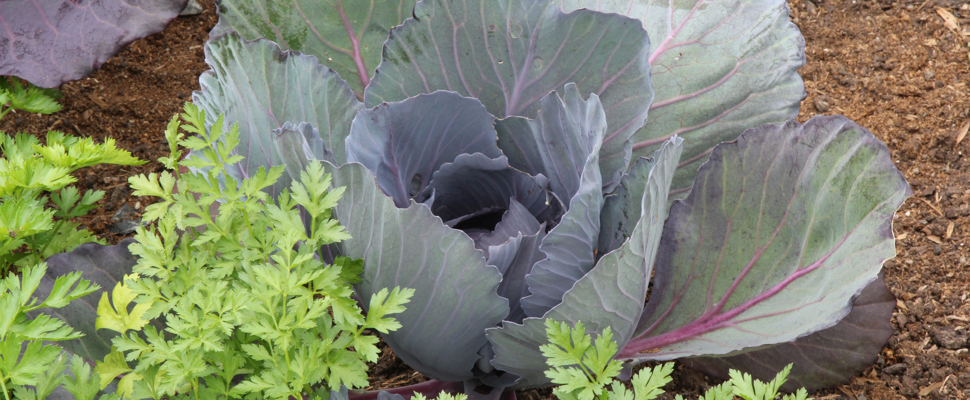
Edibles
In this section, we discuss edible plants to grow in your vegetable garden (herbs and fruit trees are discussed in separate sections). Even so, 'edibles' cover a wide variety of plants. Vegetables are plants usually treated as
Uses
Having an edible garden (or even a few edible plants in pots) has many benefits. An edible garden provides fresh, healthy food, is a good source of exercise, saves money and improves the biodiversity of your garden by supporting insects such as bees and bumblebees. As well as being useful as food, many vegetables make attractive garden plants, such as rainbow chard, triple curled parsley and purple-leaved cabbage.
What to grow
Remember to grow the food you like to eat, not just what sounds interesting!
Vegetable gardening is very seasonal. The main planting times are late October/November for summer edibles and April for winter crops. To spread harvest, we advise successive plantings. Quick rotation crops such as coriander, pak choy and lettuce should be sown or planted at regular intervals to ensure a continuous harvest.
Some vegetables can be bought in punnets, so can be planted straight into the garden. Always plant at the same depth as they are in the container. Those that don’t like root disturbance are better grown from seed, such as peas, beans, sweetcorn, coriander and beetroot. If you let a few plants set seed, you can harvest your seed for future sowing.
Visit our 'Plants for Auckland' database for the easiest edibles to grow in Auckland. For further suggestions, download our Summer vegetables for Auckland or our Winter vegetables for Auckland brochure.
Top image: Cabbage 'Red Express'